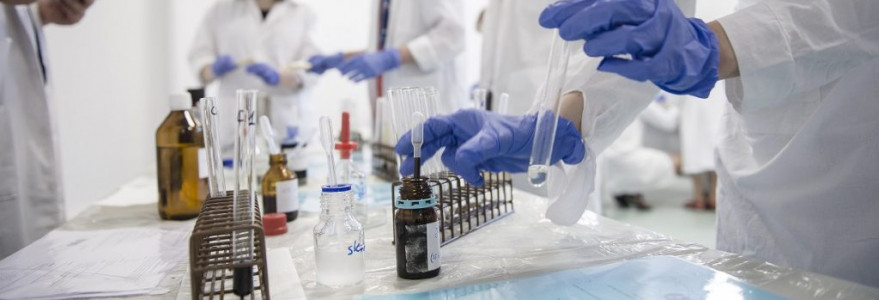A team of scientists from the University of Warsaw and the Jožef Stefan Institute in Ljubljana has developed a method for obtaining a new type of silver salt. The discovery is important for industry, as the new compound is an outstanding strong reactant, can be used under less demanding physical conditions, and is fairly easy to produce.
Researchers from the UW’s Centre of New Technologies (CeNT), the UW’s Faculty of Chemistry and the Jožef Stefan Institute in Ljubljana have discovered the new compound. It is a sulphate containing divalent silver. In the case of this salt, the divalent nature of silver implies a very strong reactivity, which makes it possible to use the compound to carry out chemical reactions that were previously difficult, expensive or impossible to produce.
Organic molecules inherently have low reactivity. This means that catalysts must be used to carry out certain types of reactions involving them, or specific physical conditions must be provided without which the reaction cannot take place. Many processes in organic chemistry require a multi-step operation, which often increases the production costs and prices of the final products.
“From the perspective of an organic chemistry-based industry, we have discovered something highly sought after and desirable. We have learned how to synthesise a simple divalent silver salt, which is such a strong reactant that it acts as a reaction initiator. A minimal amount of it is enough for organic molecules to start reacting with each other. What is more, this compound acts more strongly than many previously known catalysts or initiators used in the organic chemistry industry,” Prof. Wojciech Grochala from CeNT UW, said.
Chain reaction
Why such a high reactivity of the discovered compound? This type of silver sulphate is characterised by a one-electron deficiency. This puts the compound in a state of strong imbalance and its molecules seek to balance their potential. The balancing takes place by snatching electrons from other molecules that the sulphate encounters in its path.
“Once silver sulphate has initiated such a process, it continues to proceed spontaneously. Thus, in the case of our discovery, the silver salt initiates a kind of chain reaction, in which organic molecules react among themselves, stripping electrons from each other, resulting in the formation of new organic compounds,” Prof. Wojciech Grochala explained.
Many advantages in one discovery
The compound can be used under typical atmospheric conditions, at room temperature and without protective agents. The lack of the need to create special conditions for the reaction means that it is potentially easier to implement this reactant in production lines.
Divalent silver sulphate also has the advantage of being easily produced. It is formed by a simple electrolysis process, where the solution is sulphuric acid, a commonly used industrial substrate.
The discovered salt also has the advantage of being potent and therefore able to induce chemical reactions. This is important in organic chemistry, where a high potential is needed to trigger certain reactions.
Furthermore, silver, which is the most expensive component of the reagent, can be 100 per cent recovered for reuse after being used in chemical processes.
Industrial implementation
The developed compound can be used to create oligomers and polymers, i.e. substrates used in the production of drugs, dyes or household and industrial chemical products. It could also find application in a sector specialising in the disposal of waste or by-products from industrial processes, particularly in the petrochemical industry.
“As a university, we want to commercialise this solution, which from a perspective of technology readiness is already suitable for implementation. In order for this to happen, it is necessary to test the silver salts as widely as possible on various industrial lines in different sectors,” Prof. Przemysław Dubel, the director of the UW’s Centre for Technology and Knowledge Transfer, said.
Both the method of producing divalent silver sulphate and its use have been granted intellectual property protection in Poland and abroad.




